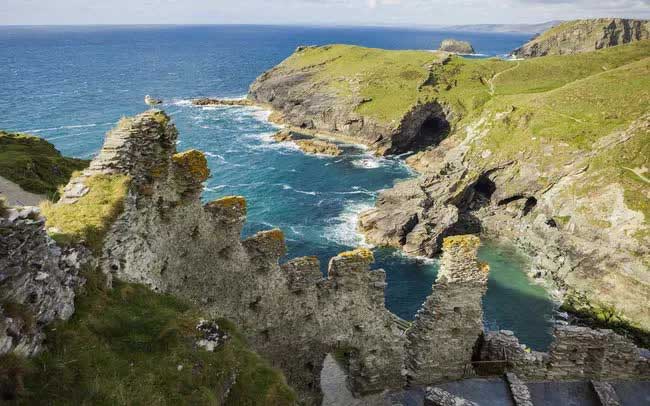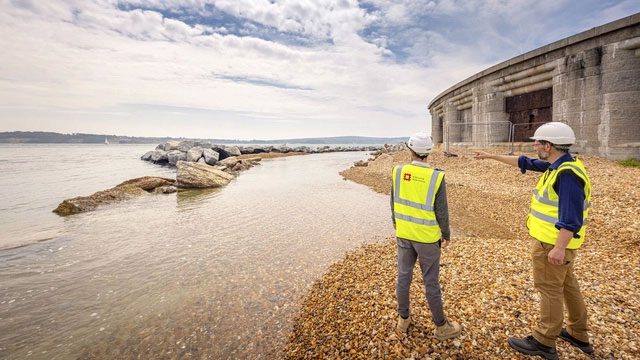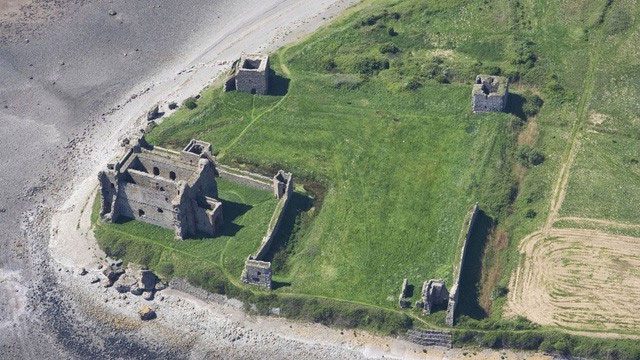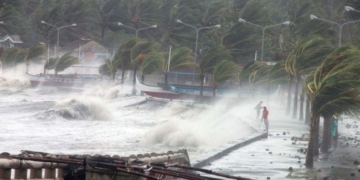A castle in Cornwall, often referred to as “the house in mythology” of King Arthur, is at risk of falling into the sea as climate change accelerates coastal erosion.
Tintagel Castle, a medieval fortress located on the peninsula of Tintagel Island adjacent to the village of Tintagel, North Cornwall in the United Kingdom, is one of the sites at risk of disappearing forever as rising sea levels inundate the coastline, according to English Heritage.
The charity English Heritage has launched a multi-million-pound appeal to fund efforts to prevent damage to the historical sites it manages.

Tintagel Castle is at risk of falling into the sea. (Photo: Sky News).
It has been reported that the amount of land lost in recent years is “alarming”, with sea levels currently rising at the fastest rate in nearly three millennia.
Rob Woodside, Property Director at English Heritage, stated: “Erosion along the English coastline is not new, but the rate of land loss we have witnessed in recent years is alarming. Some scenarios suggest that sea levels could rise by up to one meter by the end of this century. In the last century, sea levels rose 14 cm along the southern coast of England.”
“Climate change is accelerating the issues our coastal heritage faces and creating significant challenges for organizations like English Heritage that are trying to protect them.”
Mr. Woodside added: “Rising sea levels and more frequent storms pose a real risk to the future of many of our historic sites.”

Mr. Rob Woodside (right) surveys the coastal defense structures with rock revetment. (Photo: Sky News).
Tintagel Castle has been inhabited since the late Roman period, and it wasn’t until the 12th century that Geoffrey of Monmouth’s chronicles declared it as the birthplace of King Arthur.
English Heritage noted that Tintagel Castle has always struggled against erosion, with some parts having fallen into the sea in the 14th century. Recently, portions of the cliffs directly in front of the castle have been lost, affecting the viewing area and the coastal path.
The organization hopes to raise £40,000 to repair the affected areas and address damage caused by storms in the winter of 2021.
Other castles listed as among the most vulnerable to coastal erosion include Bayard’s Cove Fort near Dartmouth in Devon, built during the Tudor era to protect the entrance to the River Dart. The fort is situated on a rocky riverbank, making it prone to flooding.

Piel Castle seen from above. (Photo: Sky News).
On St Mary’s Island in the Scilly Isles, the prison wall is also in danger.
Hurst Castle in Hampshire, a fortress built by King Henry VIII in the 18th century, collapsed in February 2021 after the sea undermined its foundations.
Calshot Castle, another of King Henry VIII’s constructions, is battling erosion, and its low-lying position also puts it at risk of flooding as sea levels rise.
In Cumbria, Piel Castle, dating back to the 14th century, sits on a low-lying island rapidly eroding, just half a mile off the coast of Morecambe Bay.
Mr. Woodside remarked: “Hundreds of heritage sites in England and around the world are increasingly at risk. If these coastal lands are to survive in the coming decades, we will need to reinforce their walls and build coastal defense systems to protect them. For this reason, we are launching a public appeal to raise funds for this vital conservation work.”


















































